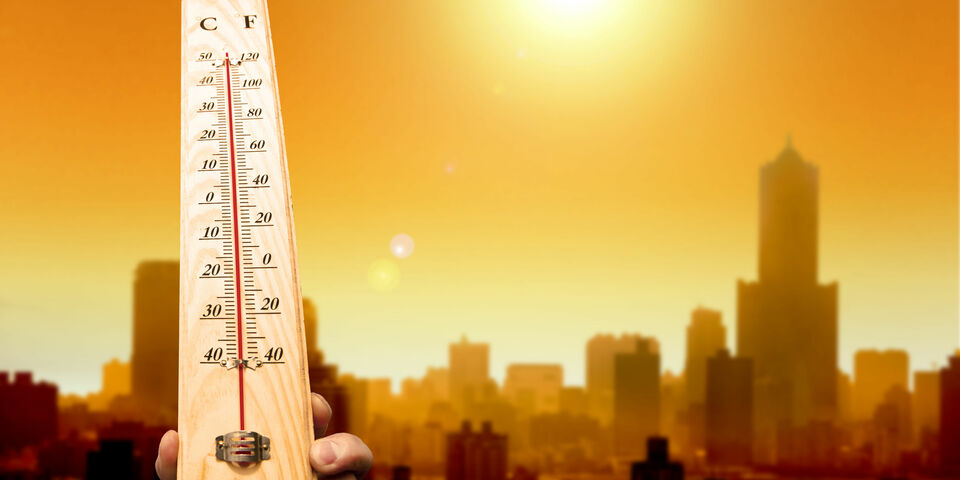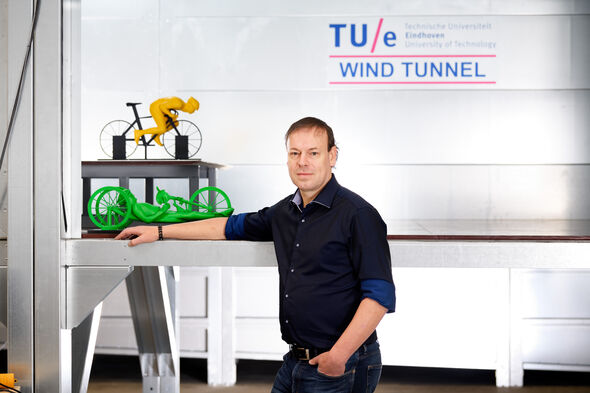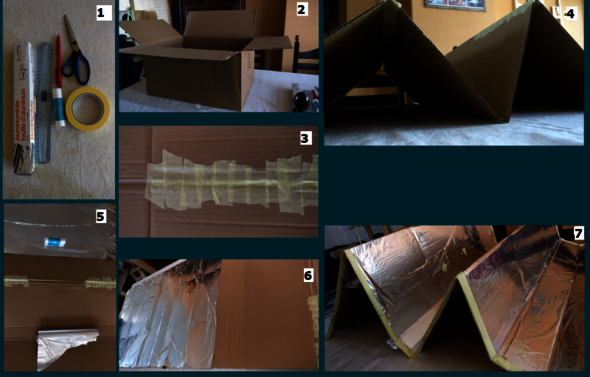Prof Talk | Heat in the city
The National Heat Plan was promptly taken from the shelves during the first tropical days last week – most important message: drink enough water and don’t exert yourself too much. Cities in particular suffer from heat stress: for example, the temperature during a summer day in Eindhoven is 4 to 5 degrees higher than in the surrounding rural areas. Marcel Musch and Bert Blocken, both from the department of Build Environment, call for more green and blue in the city; the most effective protection indoors against heat is still the 'old-fashioned' sun blind on the outside.
When you walk from the TU/e campus into the city on a hot day, you already feel them: the so-called heat islands. The abundance of stone and concrete in urban areas, less wind to blow away the heat, and the absence of green areas are the most important causes of these ‘hotspots.’ A sweaty shirt and a red face are unpleasant – but heat stress causes serious problems that we should not ignore, and it has become a growing problem for many Dutch cities, full professor of Building Physics Bert Blocken warns.
“The effects of heat islands are most evident at night; the dark asphalt, concrete and stones hold a lot of heat, which they release at night. As a result, the city doesn’t cool down sufficiently. Our body needs a good night’s rest, but the heat seriously disrupts that. Just do the math: heating up because of the temperatures during the day, sleeping on an insulation matrass that hardly ventilates, in a city that doesn’t cool down. If that continues for a few days, you start to see a serious increase in the number of deaths and diseases among the elderly and other vulnerable groups. It was long assumed that this was a ‘hot topic’ only in the large urban areas in the world, but measurements taken during the last decades have shown that has been a problem for relatively smaller cities such as Rotterdam and Eindhoven as well.”
More green and blue areas
So, the city needs to become more heat-resistant. And that in itself isn’t so difficult; municipalities need to create more green and blue areas, says urban planner Marcel Musch. He founded a DesignLab in collaboration with waterboard the Dommel and the municipality of Eindhoven last year that needs to make Eindhoven more climate robust. “The measures a municipality can take are actually very simple, and it doesn’t always have to take a lot of time to implement them. Since the 1960’s, it was assumed that laying and maintaining the familiar 30x30 cm paving stones was cheapest, and that has led to a lot of grey in the city. But the parks do not need to be that perfect, and when we encourage the naturalization of inner-city outdoor areas – with more trees, bushes, grass and water – the financial picture changes considerably.”

It may sound simple but in practice, making a city heat-resistant is a different story, Musch sighs. “Many different parties carry responsibility for the outdoor city areas. Officials for green areas management, for the water networks and energy networks, all of them representing their own organization. We use the DesignLab to see how we can change that procedure. We believe that more attention should be paid to a design-based research in the early stages of a project, and that systems should be connected so that they can reinforce each other. That way, a living environment becomes both more robust and pleasant at the same time. We need to stop thinking in a compartmentalized way: the heat problem extends beyond a red spot on a map, and the solution is broader than planting a tree; it’s about the overall picture.”
No aircos
Although Dutch cities are aware that ‘climate adaptive measures’ are necessary if they want to keep the city livable, a short-term solution such as cooling buildings might be more efficient, Blocken believes. “We have conducted research on a broad variety of measures. The one thing we should not be doing is buy loads of air conditioners; aside from being extremely energy-consuming, they also pump extra heat into the outside air. Green rooftops aren’t that efficient when it comes to cooling either. The process of evaporative cooling in which miniscule waterdrops have a cooling effect is still relatively unknown, but it certainly has potential. But the traditional – and the cheapest – ways actually work best. Make sure you have good outdoor sun blinds, and ventilate at peak moments: open the windows at night or early in the morning. And a fan and a frozen water bottle will go a long way when it really becomes too hot inside.”
Build your own outdoor sun blind with cardboard and aluminum foil
Do you want to get started to ensure that you stay cool this summer? On his blog Bert Blocken provides a simple do-it-yourself description for students with limited (financial) means and learn about the most effective and cheapest ways to keep your house cool.
Necessities:
- Large box (tip: you can usually pick up banana boxes for free at the supermarket!)
- Aluminum foil, glue stick, scissors, painter’s tape. If the box is made of solid and thick carboard, you will also need a yardstick, ballpoint pen (or pencil) and a small knife or scissors to make seams.
- Carefully fold the box open and lay the cardboard down flat. You can cover the open spots with painter’s tape so that the cardboard’s surface is smooth before you apply the aluminum foil.
- Create a zigzag pattern. This won’t be a problem if your cardboard is flexible. If it is more solid, use the yardstick to draw lines with a pencil and make superficial notches along these lines. That is how you make a ‘seam.’
- Lay the cardboard flat, cover it with glue and attach the aluminum foil. Use painter’s tape to secure the aluminum foil’s edges and make sure that loose pieces are secured as well.
- Now you have to attach your screen to the outside of your window. If your carboard is large enough, the best option is to place it in front of your window and attach it with painter’s tape just for support. Should you have to stick your screen to the window itself, it will be more difficult to firmly apply the zigzag pattern as well, depending on the size of the window and the cardboard. In that case it would be best to attach the cardboard to the window with duct tape.
About Prof Talk
For anyone seeking answers to topical questions, our academic staff are the ideal oracle. Whether the question concerns the energy transition, automation or the danger posed by hackers, they provide clarity on topical news issues. While Trump would say, “It's only an opinion”, we are highly appreciative, and so once every three weeks we will be publishing Prof Talk.




Discussion